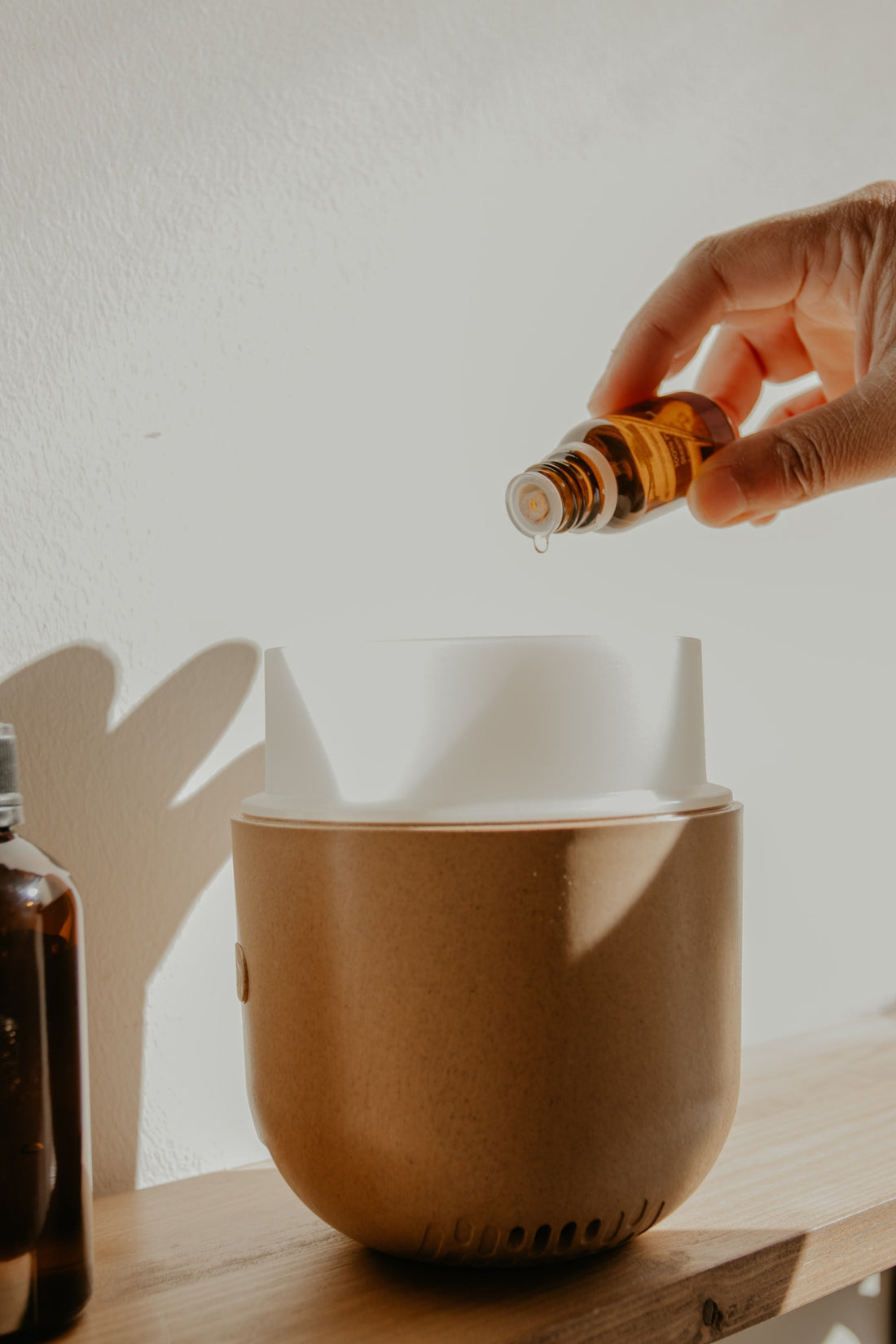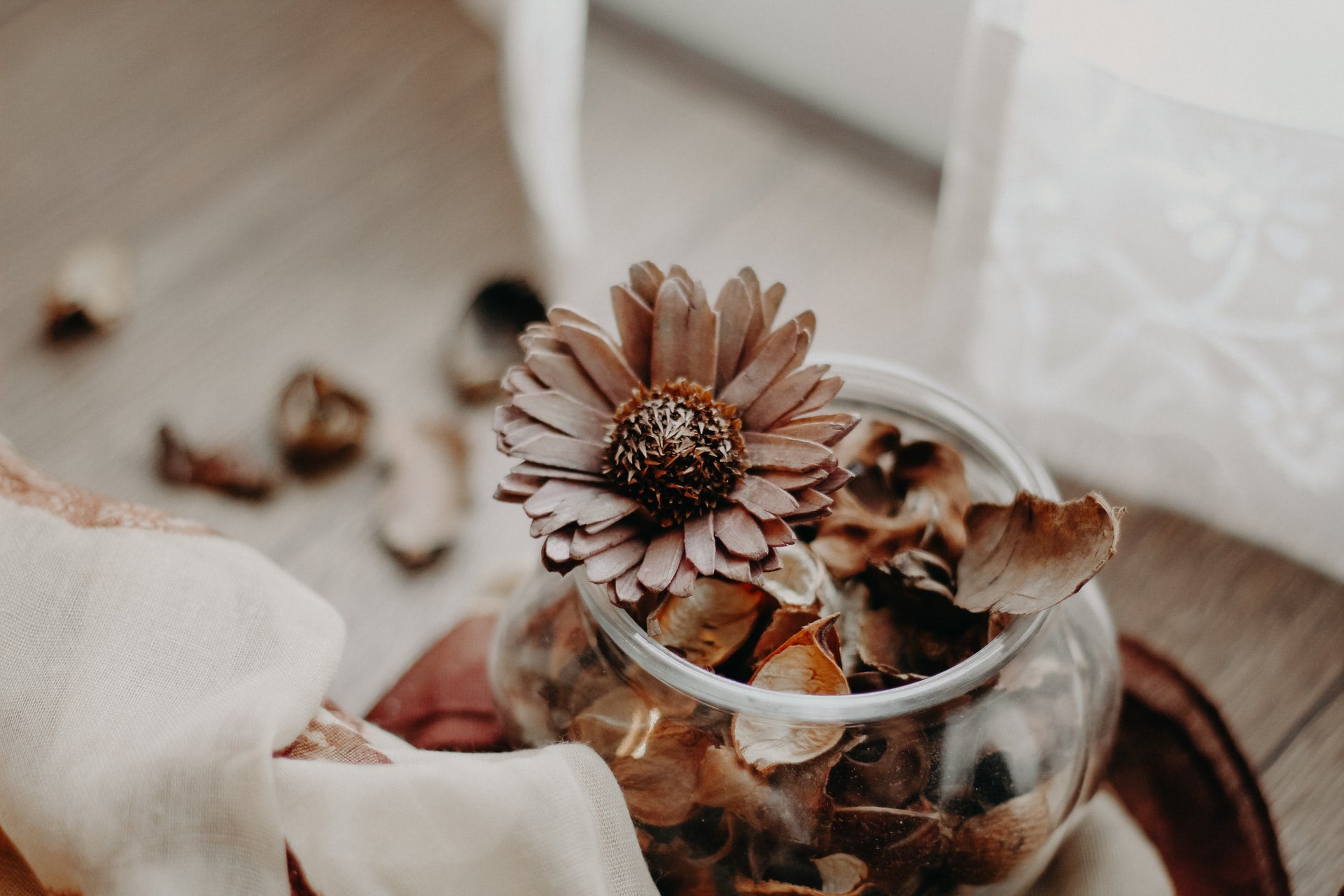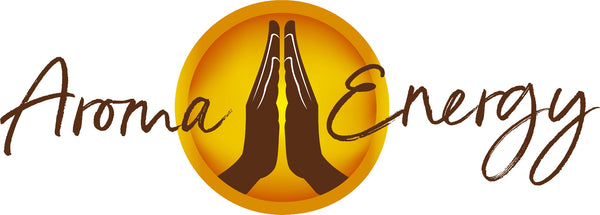
How to Use Essential Oils and Fragrance Oils in Creative, Healthy Ways
Share
Key takeaway:
- Essential oils are made of natural plant extracts, whereas fragrance oils are manufactured.
- Essential oils can offer a variety of wellness benefits. Fragrance oils, meanwhile, are known for their lovely scents.
Introduction
You’ve probably heard of essential oils by now. But could you do with a firmer understanding of how to use essential oils for your health and fragrance oils in your home?
You could? Right, we better get to work!
In recent years, so-called experts have been using the term “essential oils” somewhat loosely to describe just about anything that has a scent. This has muddied the waters on what essential oils are actually for (and what they can do!)
We want to separate fact from fiction once and for all.
So whether you’re searching for oils that can boost your wellbeing or you’re looking to spruce up your home, we’ll share everything you need to know about how to use essential oils and fragrance oils in safe and fun ways!
Here are the topics we’ll explore today:
What’s the Difference Between Essential Oils and Fragrance Oils?
How to Use Essential Oils for Your Health
- How to Use Carrier Oils With Essential Oils
- Where to Put Essential Oils on Your Body (and the Associated Health Benefits)
- Essential Oils for Hair Health
How to Use Essential Oils at Home
4 Other Ways to Experiment With Essential Oils
What’s the Difference Between Essential Oils and Fragrance Oils?

The two terms are often used interchangeably but you don’t want to get them mixed up! The main thing to remember is this:
Essential oils are made from natural plant extracts. They come from various parts of plants, such as the resins and roots, and some oils can be used to support your health. This practice is often known in the medical community as aromatherapy.
Fragrance oils are synthetic, which means they have no natural health benefits. They shouldn’t be used on the skin or for any health purposes. Fragrance oils are generally used for things like:
- Wax melts
- Candles
- Soaps
We’ll talk about fragrance oils a bit later on, but more importantly, let’s look at what essential oils are and how to use them for your health.
ONE QUICK NOTE before we start:
When using essential oils, always read the packaging inserts and labels. Some essential oils come with sun sensitivity warnings. Most oils require dilution and some should not be used by pregnant women or people with certain health conditions. If you have any doubt, please consult your doctor before using essential or fragrance oils.
Right then! Now we’ve covered the important stuff…
How to Use Essential Oils for Your Health
It was Hippocrates who said, “Nature is the best physician.” And two centuries later, we’re still discovering the benefits of mother nature!
Of course, essential oil benefits differ depending on how you use them, the dose, and what type you’re using.
But, as a practice, aromatherapy is recognised by clinicians to help with various health issues and symptoms including:
- Pain
- Vomiting
- Nausea
- Anxiety
- Stress and stress-related headaches
- Insomnia
- Dementia
- Respiratory difficulties
- Oncology and palliative care
- Overall wellbeing

How do you reap these sorts of benefits, though?
Let’s start by looking at how to use essentials oils topically. Our favourite ways of diluting them include:
- Adding a few drops to a bath
- Adding a few drops to your usual lotion or moisturiser and rubbing into the skin
- Mixing with water and applying via a cloth compress
- Placing a few drops on your microwavable bean bag (this is perfect for relieving sore muscles - Lavender is a top pick!)
- Mix with a carrier oil to form a rub or massage oil. Using carrier oils for dilution is also an excellent way to extend the use of your expensive essential oils, without any impact on their effectiveness
How to Use Carrier Oils With Essential Oils
Carrier oils dilute essential oils, so that they can be used safely on the skin. They can also reduce the possibility of side effects.
Common carrier oils include cold-pressed coconut and avocado oils. Any plant oil that has had impurities removed and doesn’t solidify at room temperature will potentially work – as long as it blends well, absorbs quickly, and doesn’t leave stains or clog pores.
Are there any other carrier oils to choose from?
Yep! You’ve got almond, grapeseed, jojoba, and olive.
Individually, these oils may have healing effects of their own. So choosing the right carrier can be an important decision for you to review.
Note: When using essential oils on the skin, always avoid highly sensitive areas and broken skin. If you have sensitivities or allergies, it’s always best to consult your physician who can advise you how best to use them specifically for you.
Where to Put Essential Oils on Your Body (and the Possible Health Benefits)
- The temples – Peppermint, lavender, and basil oils may help with stress, motion sickness, nausea, and headaches
- Outer ears – Try juniper, lavender, and basil can relieve earache and swimmer’s ear
- The shoulders, back, and achy joints – Ylang-ylang, clove, and wintergreen may help to relieve aches and pains
- The chest (over your heart) and abdomen – Ylang-ylang and bergamot may help with lowering blood pressure and reducing stress
- The inside of your wrists – Myrrh, basil, and lemongrass may relieve the symptoms of carpal tunnel syndrome. Ideal for those working from home or at desks all day!
- The heels – Clary sage and myrtle are thought to assist with reproductive issues and alleviate stress
- The base of the big toe – Myrtle may help improve metabolism, thyroid, and pituitary gland function
- The chest – Try eucalyptus, peppermint, or lemon to potentially reduce the effects of asthma, congestion, coughs, and bronchitis.

Essential Oils for Hair Health
When it comes to using essential oils for hair, your choice of carrier oil is very important. You don’t want a viscous oil that will leave your hair looking greasy.
For dry, damaged hair, use an oil like coconut, castor, olive, argan (also known as Moroccan), or pumpkin for the best results.
Alternatively, add a few drops of your essential oil to your usual shampoo and conditioner and treat as normal.
You can use essential oils in carriers for hair as follows:
- As a conditioner after shampoo washing
- To detangle after washing and before brushing, rub a small amount through the hair with the fingertips
- As a pre-wash hair mask, comb through and leave in for ten minutes’ minimum
- Massage in a small amount as an overnight scalp moisturiser before going to bed and wash it out in the morning. Protect your bed linen by wrapping your hair in a towel or placing one over your pillows
The most common use of essential oils for hair is to condition and shine.
The medicinal properties of many essential oils may combat scalp health issues as well. One study has even found that tea tree oil effectively treats dandruff.

BROWSE OUR ESSENTIAL OILS COLLECTION

Relax & Sleep Essential Oil Set
— Chamomile, Clary Sage, Geranium, Lavender, Marjoram
Source: Aroma Energy
How to Use Essential Oils at Home
Oil Burners/Diffusers
A diffuser helps to disperse the scent of the essential oil throughout a room.
Learning how to use essential oils in a diffuser is a worthwhile endeavour! Why?
Well, our smell receptors connect directly with the limbic system – the part of the brain that handles memory and emotions.
Does cinnamon remind you of Christmas, or citrus bring you memories of summer? That’s your sense of smell associating with your memories!
Having a scented home that prompts pleasant memories and emotions can make it welcoming and relaxing.

There are three types of diffusers to select from:
- Electric diffusers with water tanks dispense aromatic mist via a vibrating mechanism. The oil is dropped into the water but can take a bit of experimentation to get the right balance of oil to water
- Nebulizer diffusers use a pump system to emit steam. The oil is not diluted with water, so the scent is more intense. Be wary of using these with dogs or animals with a keen sense of smell as it can upset them
- Non-electric diffusers rely on candles or charcoal tablets to heat the oil, which is diluted in water. They are cheap and simple to use but must be used with caution to avoid accidents resulting from the open flame
Frequently, diffusers also act as humidifiers. Many come with LED coloured lights, too, that can be changed to the colour of your choice. And some diffusers even double-up as speakers!
The use of colour and music can significantly enhance the therapeutic benefits of your essential oils.
Top Tip: If you plan to use your diffuser in the bedroom to help you sleep, look for an ultrasonic model. It will emit the least amount of noise, so your sleep is not disturbed.
Cleaning With Essential Oils
If you’re looking for natural options to use in your home and avoid nasty chemicals on your surfaces, essential oils come up trumps here too!
Some of our favourite ideas for cleaning with essential oils include:
- Dilute your essential oil and turn it into a fabric spray to freshen your bedsheets
- Add pine, rosemary, or tea tree to surface sprays to make use of their natural antimicrobial properties. You can also create your own surface sprays from scratch if you find the right mixture that works for you!
- Citrus essential oils are well-known for their degreasing properties, and they make your kitchen smell incredible
- If you’re looking for calming vibes (or trying to sell your home) vanilla is a welcoming and homely scent that most people enjoy
Top Tip: if you’re using essential oils on fabrics, it’s better to over dilute than under dilute because you could stain them. It’s always best to test your mixture on a small discrete patch first. Just in case!

4 Other Ways to Experiment With Essential Oils
Essential oils aren’t limited to the health and home. You can also experiment with different scents and combinations in the following ways:
Meditation
Scent can help you focus and concentrate as part of your practice. Sage can help with cleansing, and peppermint can give you sharp focus if you’re meditating for a purpose. Simply add these essential oils to a diffuser or room spray.
Soaps
The possibilities here are endless and you can create unique combinations that are just for you. Just make sure you are diluting your essential oils enough in the mixture.
As a great starting place, citrus essential oils are perfect options for soap if you like a refreshing shower in the morning. It will sure wake you up right away!
Air Fresheners for the Car
Take your essential oils on the move by giving your car a fresh scent. Keep things simple by infusing a wooden clothing peg. Allow it to absorb the oils and then clip it somewhere in your car.
If you want to create something fancier, design a foam or felt shape and infuse essential oils to hang from your mirror.
Candles
Just like with soap, you can infuse candles so your home smells amazing. Make your own scent with unique essential oil combinations too!
The one thing to remember is to add the essential oils to the wax when it is liquid. Do not add essential oils to candles that have already set, it can become a fire hazard!
CHOOSE YOUR FAVOURITE ESSENTIAL OILS
How to Use Fragrance Oils
Fragrance oils, as the name suggests, are focused purely on the scent, so they can be a bit more potent when you’re using them.
Here are some uses we’d recommend:
Potpourri
Refresh your potpourri when it starts to lose its scent using fragrance oils. Simply sprinkle a few drops in the bowl and toss together. You can buy ready-made fragrance mixtures or create your own that’s unique for your home.

Oil Burners
Designed specifically for fragrance and essential oils, oil burners can be a great addition to your home. You’ll need to dilute your fragrance oil in water, but even so, it can fill the room with your chosen scent.
Candles/Wax Melts
The most common oils in candles and wax melts are fragrance oils, and when you’re creating your own, simply add to the mixture and enjoy homemade custom creations.
But how much fragrance oil for wax melts and candles should be used?
Candle College recommends up to 10% fragrance oil. So, 5kg of wax could be mixed with 500 ml of fragrance oil.
You can experiment with different combinations for your home, and even add dye to reflect the scent you’ve chosen.
Perfume
Some perfume-compatible fragrance oils can allow you to create your very own scent!
Just ensure you always check your fragrance oils when using products that will touch your skin, like with perfume or beauty products. You’ll know this already, but some synthetic chemicals in fragrance oils can act as skin irritants.
BROWSE OUR FRAGRANCE OIL COLLECTION

Fresh Fragrance Oil Set
Source: Aroma Energy
Thanks for reading!
In this article, we’ve given you a peek into how to use essential oils and fragrance oils.
The truth is, the possibilities are almost endless! From health and beauty to home and cleaning, you can make use of essential oils. Just make sure you choose pure essential oils that are fully transparent about what they can be used for.
Would you like some further advice on how to use essential oils and fragrance oils? Or perhaps you’d like some pointers on where to find the best blends?
No problem — simply send us an email on:
We look forward to hearing from you!
RELATED - Best Essential Oils for 2021
Written by Declan Davey (Health & Wellness Copywriter)
"Disclaimer: The content on the Aroma Energy blog is for informational purposes only and not a substitute for professional medical advice, diagnosis, or treatment. Please do not ignore professional medical advice because of any information on https://aromaenergy.co.uk/. If you have any concerns about your health, consult a healthcare professional or GP."
Written by Declan Davey (Health & Wellness Copywriter)
